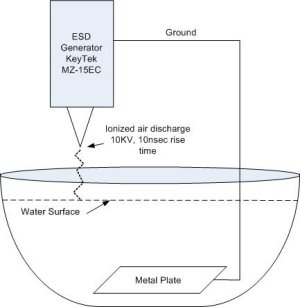
RF
Cafe data on air and water dielectric properties
| Material | Dielectric constant | Dielectric strength (breakdown) |
| air | 1.00054 | 30 - 70 volts/mil |
| water (68F) | 80.4 | 80 volts/mil |
Dielectric constant - when two sets of opposite charges are separated by a distance in a medium such as air or water, the dielectric constant of the medium tells what the produced voltage or electric field between the sets of charges will be. The larger the dielectric constant, the lower the voltage or electric field. The key thing to note here is that the dielectric constant is a huge 80 times higher for water than air. This means that the same charge separated by the same distance will produce 80 times higher electric field in air than in water.
Dielectric breakdown - this is the electric field (volts per distance) required to breakdown or cause ionization in a medium such as air or water. Note that water requires 2.6 to 1.14 times higher electric field in order to cause ionization or breakdown.
Conclusion from this? The hypothesis here is that an ionization path coming down from air will have a very difficult time ionizing water. This is primarily because the electric fields created by the charge coming down from the air (which sustains the ionization) will be 80 times smaller once the charge is in an equivalent volume of water. Also, the higher breakdown strength and higher density of water are going to make water more difficult to ionize than air.
The implication is that the natural path for a lightning strike to water
is to come down to the water surface and then continue in ionized air just
above the water surface since the ionized air at the surface will have
a lower impedance than the water itself. The ionized air streamers spread
out in a radial pattern following the water surface until the ionization
path is no longer sustained. At this point, the charge is distributed over
a large area and then resistively dissipates into the water. I don't
know how to prove this - but a mechanism which is likely similar can be
duplicated and photographed in a lab environment.
Pictures of ionization in air meeting the water surface.
The below pictures are of an ionizing discharge from a Electrostatic discharge (ESD) simulator into bottled drinking water. The ESD discharge has about a 10 nsec rise time and a peak voltage of approximately 10KV. The ground for the ESD simulator is immersed in the water bowl.

In all cases, the ionizing discharge goes straight down to the water surface and then travels outward from the point of contact at the water surface in radial patterns.
In the first picture below, the discharge goes to the water surface
with several radial ionization paths outward. One path follows the water
surface and contacts the ESD simulator grounding terminal. You can make
out the ESD simulator discharge cap in the left side of the image.
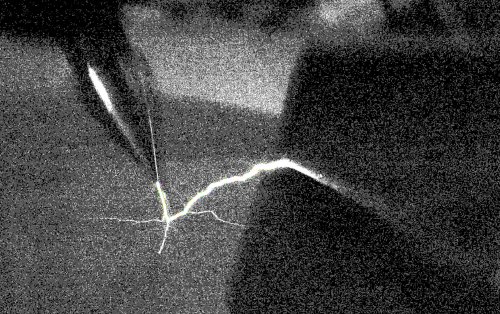
In the below picture, the ionizing path contacts the water surface and radiates outwards until the ionization collapses. The following pictures show a similar mechanism.

The picture below captured two zaps (1 second apart).

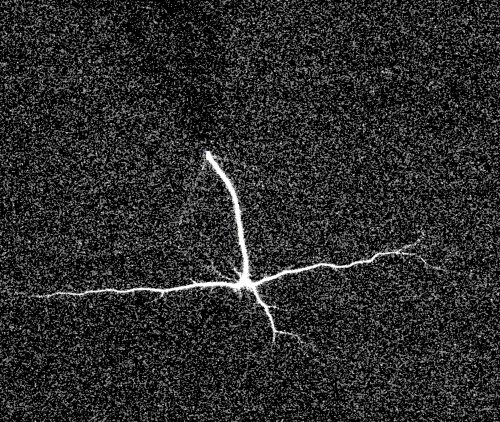
The next picture also captured two zaps (1 second apart).
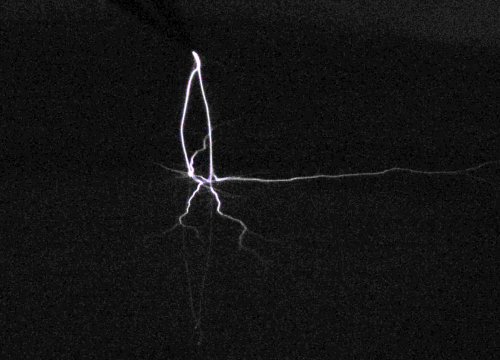
The picture below shows a "mini sailboat" with the discharge electrode just above the top of the "mast" (not in the picture). At the middle of the picture, the charge jumps through air (spark gap) from the mast to a second conductor that is just above the water surface. The charge exits the second conductor and then ionizes the air just above the surface and extends outward in the multiple radial paths until enough area is covered to finally dissipate the charge in the water. This is fresh water.

Picture below. This picture is similar to the above picture except that the water was made a lot more conductive by adding salt. The water is likely more conductive than sea water. The water surface ionized path is much smaller than what occurred in fresh water. The salt water is much more conductive and also has a much faster surface charging time constant (see the radials pdf link below).
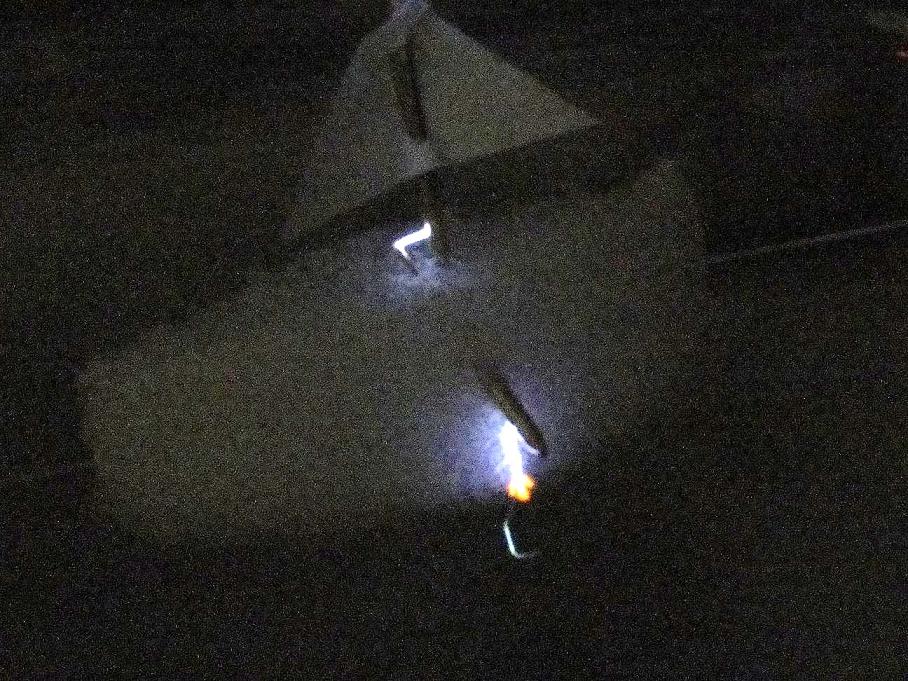
Other web sites showing radial patterns of ionized air discharge over water
http://www.lightningsafety.com/nlsi_lhm/Radials.pdf
http://www.marinelightning.com/FAQ.htm
(below picture from The National Geographic magazine, August 1969)